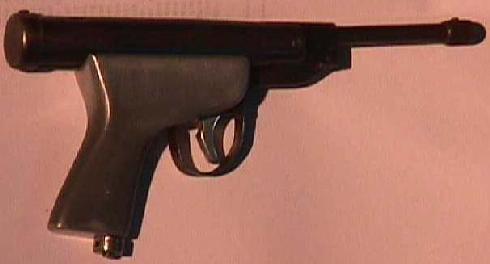

This page demonstrates the functioning of a simple AIR-GUN of bore .22". It is simple yet a ingenious and effective weapon based on fundamental mechanics.The gun primarily employs a very stiff compression spring to transmit momentum to a light pellet.Here a very clever method of transmitting energy to the pellet is used-it is not by collision but using the dynamics of compressed air.
Early weapons had a reservoir of compressed air which, when suddenly released by a trigger, projected a single bullet or charge of shot with limited range and accuracy. During the 16th century a spring was substituted for the resevoir. The first reported use of such guns is in Nuxemberg in Germany around the year 1530. Later weapons were contructed on the older principle of a reservoir, but these use cylinders of compressed gas, usually carbondioxide.
To see a MUSEUM on air-pistols click on this www.airgunletter.net/amindex.html
Most modern air guns are inexpensive BB guns (named for the size of the shot fired). The bestof these develop about half the muzzle velocity of light firearms, are accurate enough for marksmanship training at ranges up to 30m, and can kill small game. Darts with tranquillizing drugs may bge fired to immobilize animals for handling or capture. An air gun projectile is seldom carries beyond 90m.
The airgun under study is made of the following components:
i) Mainbody
This primarily consists of
a)The rear cylindircal housing where the actual mechanism takes place.
b)The Barrel which provides an initial guideway for the pellet.
c)The casing for the trigger cam.
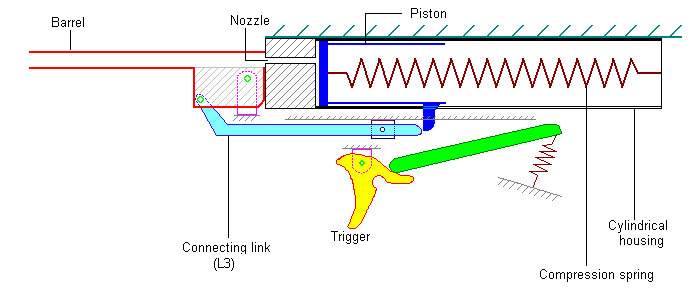
ii) Spring
This is the backbone of the mechanism. The important parameters of the spring under study are:
Length(l)=114mm
spring diameter(D)=11.94mm
wire diameter(d)=2.36mm
no. of active coils=21
The above can be used to find the sping constant using the formula
Using the material of the spring as hard tempered steel (i.e.G=73.1GPa), we calculate
A more accurate value can be calculated eperimentally.A mass of 5 kg was suspended and the deflection of the spring was found to be 7mm. This gives us the value of
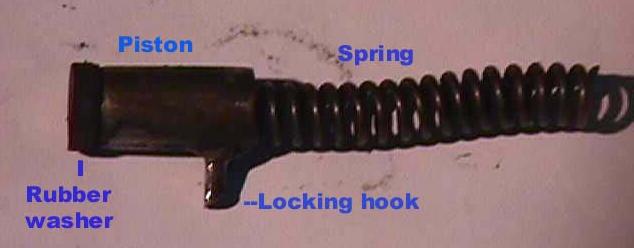
iii)Piston
This serves the purpose of compressing the air. One end of the piston has a hook for locking the spring in the compressed state. The other end ahs a rubber washer(similar to the piston ring in a two-stroke engine) for prevent leakage of the air.
iv) Butt
This is basically to ease the holding of the gun. It is made of aluminium so that it has minimum weight.
v)Trigger
This basically consists of the tigger, a connecting rod and a spring as shown below.
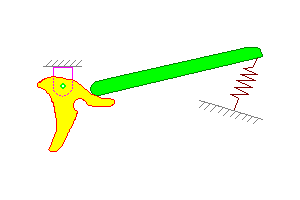
The entire components are assembled to fire the PELLET. This weighs about .12 g and is hollow with a sharp forward end so that it experiences minimum drag in its passage through air.
The working of the air gun can be understood to be in two parts viz..
(a) Loading
(b) Firing
The barrel of the gun is hinged to the cylindrical casing. The barrel is connected to the piston via a slider crank mechanism as shown

L2=50mm, FL3=10mm, e=10mm.
Thus on rotating the barrel about the hinge the piston moves which in turn compresses the spring. The trigger locks the piston with the spring in the compressed state in the manner shown below.
The trigger locks the piston with the spring in the compressed state in the manner shown below.
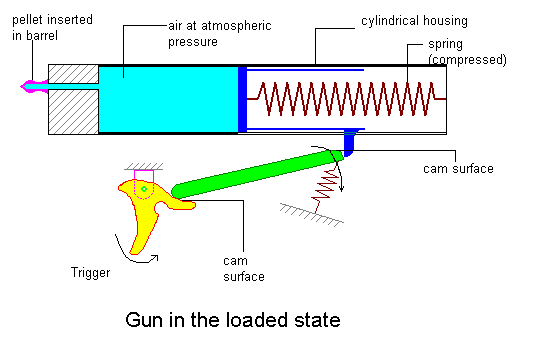
Now we have the spring in a compressed state attached to the piston finally we return the barrel to its initial position This is the loaded state of the gun
FIRING
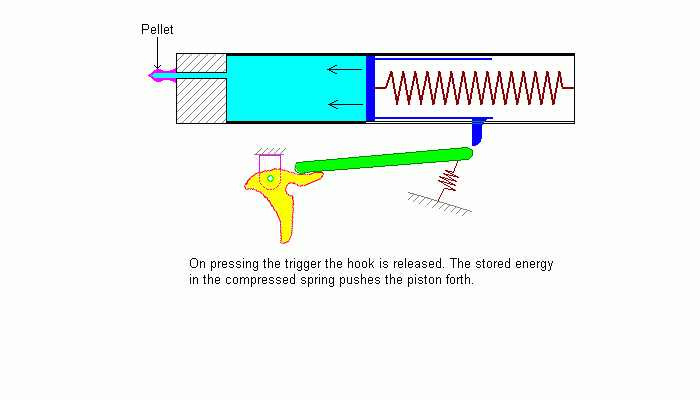 Firing is done by pressing the trigger.
When the trigger is pressed it releases the spring, thus actuating the springwhich compresses the air, which in turn drives the pellet through the bore or barrel of the gun.
Firing is done by pressing the trigger.
When the trigger is pressed it releases the spring, thus actuating the springwhich compresses the air, which in turn drives the pellet through the bore or barrel of the gun.
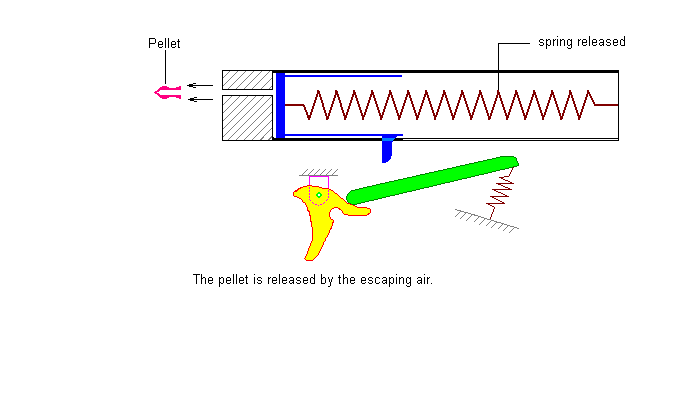
SPEED OF THE PELLET
Speed of the pellet was experimentally measured using simple projectile method. Pellet was shot from a height H=1.5m & average range after repeated no. of trials was found to be R=15m. Now using the formula